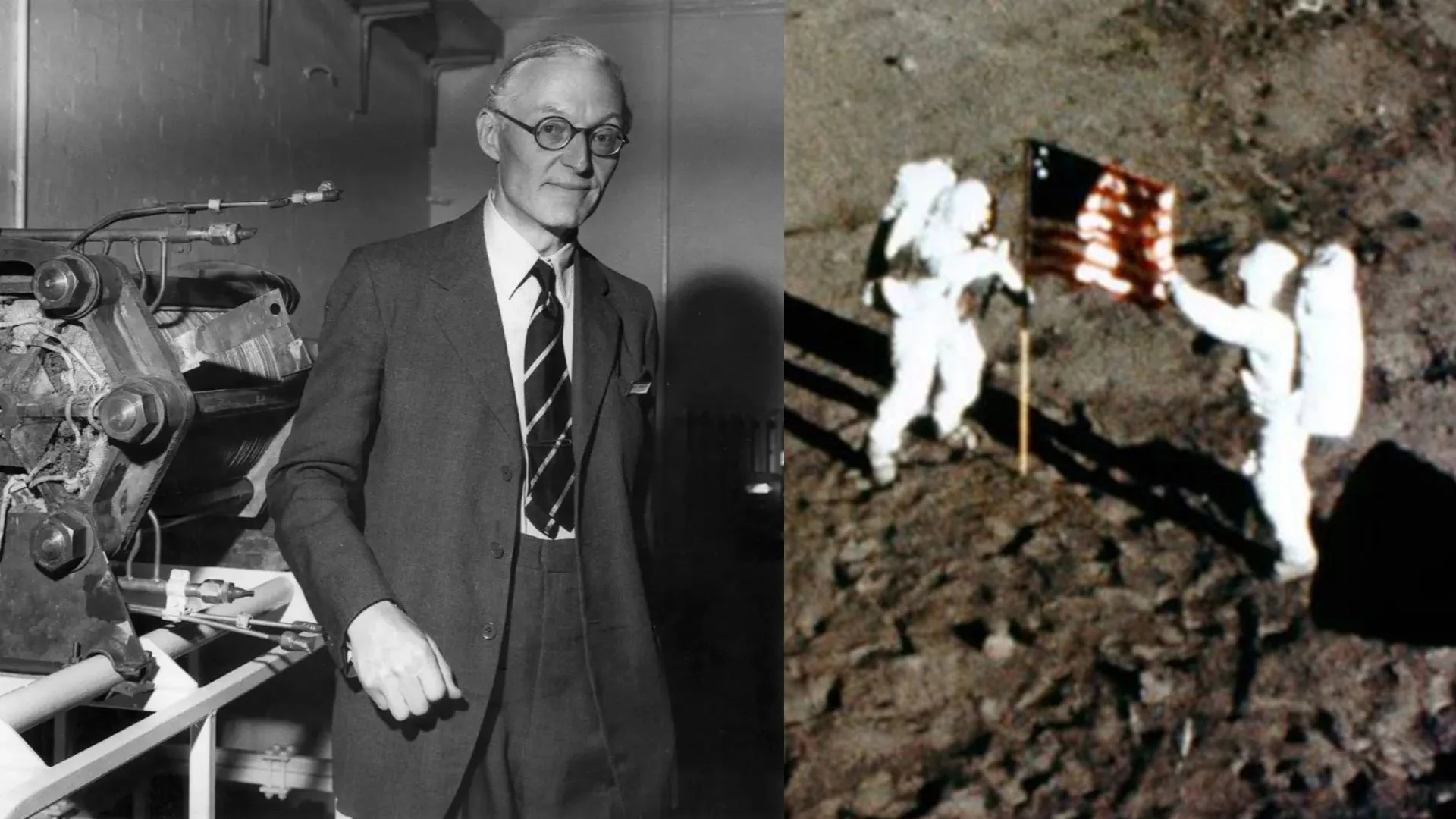
British engineer Francis Thomas Bacon, who revolutionized clean energy with his invention of the hydrogen-oxygen fuel cell, will be honored with a blue plaque at his former home in Little Shelford, Cambridgeshire. Nearly seventy years after his groundbreaking work, Bacon’s contributions to clean energy remain significant. His invention played a crucial role in the Apollo 11 mission, which achieved the historic moon landing in 1969.
Known as “Bacon Cells” by NASA, his fuel cells provided secondary power for astronauts, enabling them to communicate, operate equipment, and even drink water generated by the cells. In a BBC interview from 1969, Bacon described the advantage of his invention: “Normally, in the course of time, a battery runs down and you’ve got to recharge it. Now, [with] this device, as long as you go on feeding hydrogen and oxygen into it, and you remove the water formed, it will go on generating power indefinitely.”
Bacon’s contributions to energy research earned him recognition, with former President Richard Nixon reportedly stating, “Without you, Tom, we wouldn’t have gotten to the moon.” The Cambridge charity Cambridge Past, Present & Future is leading the initiative to install the blue plaque, celebrating Bacon’s legacy that continues to inspire sustainable energy research today.
Professor Sam Stranks from Cambridge University underscored Bacon’s visionary work, noting the importance of fuel cell technology for space missions. “Fuel cell technology was extremely important to the space program because as long as you can continuously supply the gases, you can keep producing electricity,” he explained.
The renewed interest in fuel cells as a potential green energy source reflects Bacon’s initial aspirations. These efficient power systems are particularly suited for applications in long-haul trucking, maritime transport, and remote facilities, where traditional batteries may be impractical due to size and weight constraints.
Bacon’s journey into fuel cell research began in 1932 after studying mechanical sciences at Cambridge. Inspired by the work of physicist William Grove, who first explored fuel cells in 1839, he conducted his own experiments, ultimately leaving his job to pursue his passion. His breakthrough came in 1962 when NASA adopted his alkaline fuel cell for the Apollo program, leading to a $100 million investment from a U.S. company.
Despite the significance of his work, Bacon remained relatively unknown outside scientific circles. Professor Clemens Kaminski of Cambridge University remarked on the challenges British engineers face in translating brilliant ideas into commercial success. Nonetheless, Bacon persevered and gained appreciation from Apollo 11 astronauts Neil Armstrong, Buzz Aldrin, and Michael Collins, who presented him with a signed photo of Armstrong’s iconic moonwalk.
Although Bacon passed away in 1992, his legacy lives on. Professor Stranks honored him as “a visionary and an unsung hero,” emphasizing that Bacon’s pioneering fuel cell technology continues to shape clean energy initiatives today.















